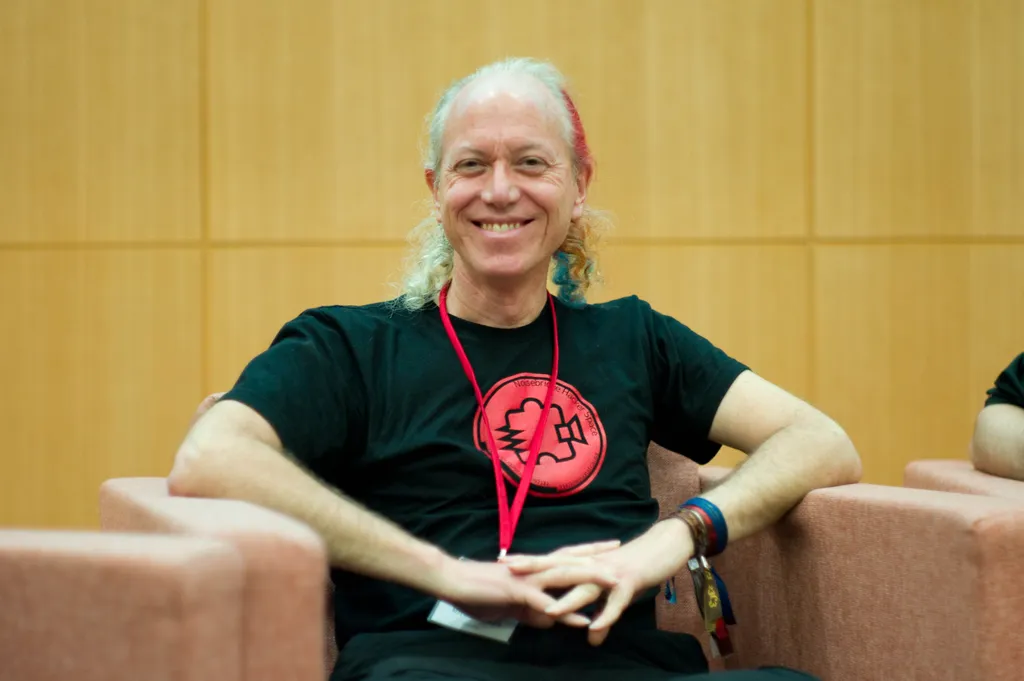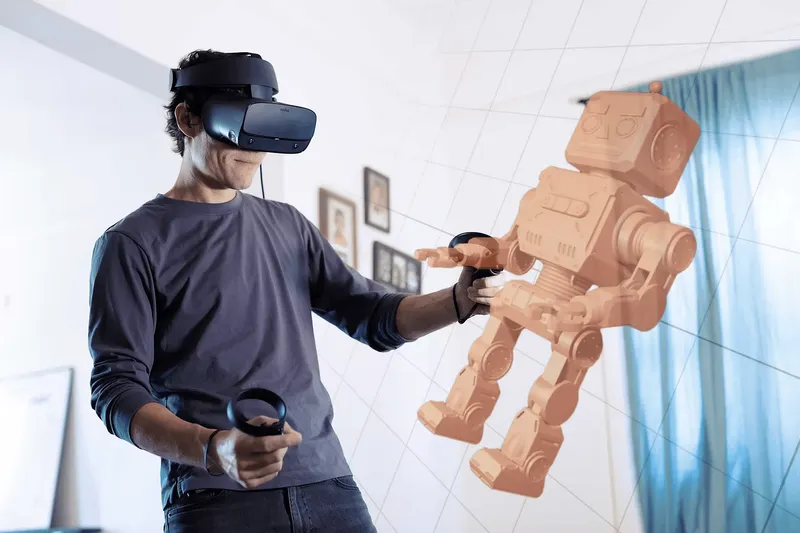Virtual reality is here to stay. It is showing up everywhere – from taking center stage at CES 2015, to capturing audiences at the Sundance Film Festival this year. Practically everywhere you look, VR is now sliding in to revolutionize every industry it touches; but where did it all start from? Why is virtual reality proliferating now like never before?
In a series of interviews, we will look into the past to see where this exciting virtual reality ride began. Today, we start with a little known pioneer who worked at a VR company in the late 1980’s called VPL Research. His name is Mitch Altman.
Back then, Altman was a part of the legendary team that included iconic researcher Jaron Lanier who is concerned among some circles as one of the “godfathers of VR”. In addition to Lanier, Altman worked along side with the creator of the Data Glove as well as about 15 other individuals.
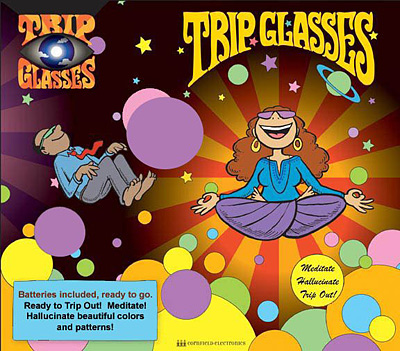
Since then, Mitch Altman has been heavily involved in the hackerspace movement and is bringing together hackers, makers, builders, and creatives from all across the world to form communities of new age thinkers and tinkerers. Altman has also created an open-source project called the “Brain Machine” (aka Trip Glasses) which is a device that plays back brainwave frequencies through visual LED flashes and binaural sound. Altman as also developed a lucid dreaming headset aptly dubbed the “Neurodreamer”.
Mitch Altman has seen the progression of virtual reality from the 1980’s as well as witnessed the re-emergence of new VR technologies. Because of this insight into both worlds, we reached out to him via Skype to see what his thoughts are about the current trends. The result culminates into a fantastically long video where we discuss everything from hackerspaces to virtual reality to fringe research and everything in between. It contains a ton of information so we cut into the most notable parts and compiled them in an easily digestible format, which can be see below:
The full video is embedded at the end.
So Mitch, when did you start hearing about virtual reality?
Well, the term virtual reality came from VPL while I was there. VPL was started by Jaron Lanier. He became my friend when we worked together.
I got into VPL really by random because I was sitting next to the guy who invented what became the Power Glove. He called it the Data Glove which is a real computer input device and an instrument. The Power Glove was kind of a toy made by Mattel for a gaming input device; but he [Thomas Zimmerman] invented that.
Before [the Data Glove] became known to anyone, [Zimmerman] was at an electronic music performance; and I sitting right next to him. It was in someone’s loft. It was really cool and weird electronic music. It was totally captivating!
We really didn’t talk to each other; but afterwards for some reason he just turns to me and he said “I’m looking for people who can help me make this project with microcontrollers.”
I had just spent the last four and half years teaching microcontrollers. In particular I was teaching with 6502 microcontrollers which were the ones used in Apple II computers and in Atari and in a lot of early computers. He said it was using a 6502 so I was like “I can help with that!”
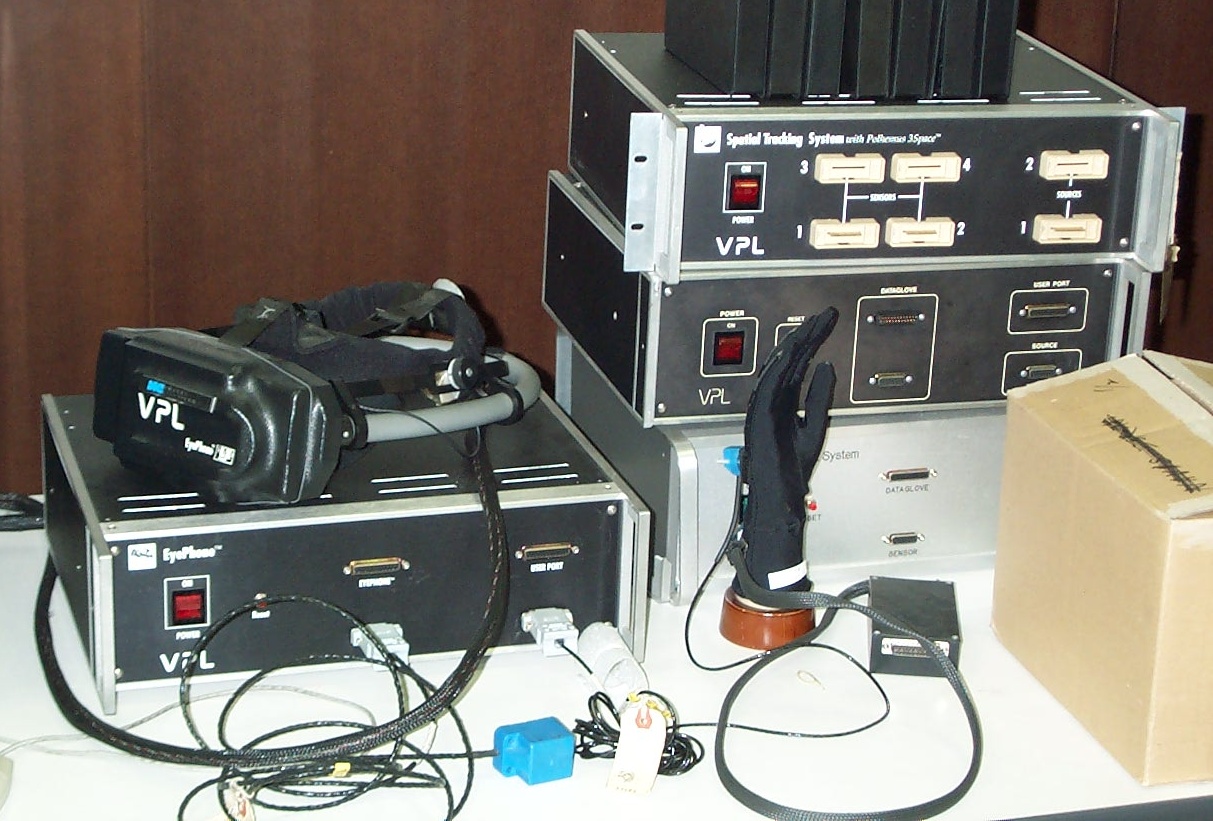
Who else was working with you back at VPL?
Oh there were a lot of cool people! Let’s see if I can remember their names. Young Harvill was one of the people, and his girlfriend or wife…I can’t even remember. Oh, these neurons haven’t been fired in a while!
There was also Chuck Blanchard, and he was amazing. All these people were really amazing.
The president of the company was a French guy. Jean-Jacques. He wasn’t so much part of the group but was willing to facilitate the whole process. Jaron and him had a falling out later, which is what happens at Silicon Valley startups.
Oh yeah, the Data Glove was made by Tom Zimmerman. We’re still friends.
Young was working on the software to create realities.
There were like 15 of us working at VPL.
Were there other people not working at VPL who were working in Virtual Reality at that time?
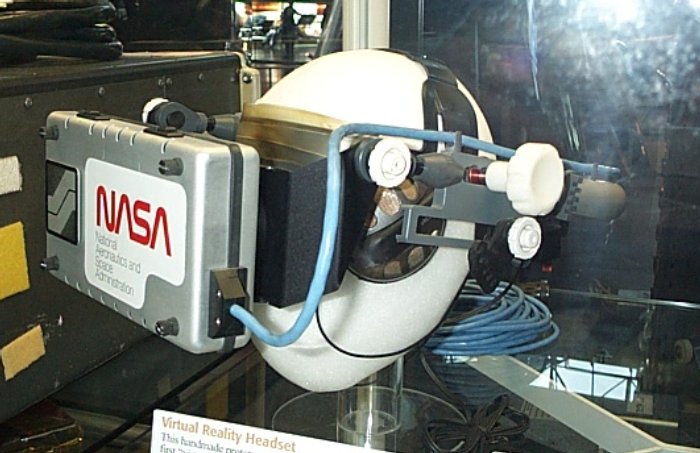
Not really. Some people in NASA – who we were working with. They had these huge setups.
There was also a doctor by the name of Greenleaf. He had a practice where he wanted to use [the Data Glove] for helping people with medical problems.
The thing that was interesting was back then that we found was that it was super easy to fool a human brain into thinking that something is real. You can very easily suspend disbelief. It’s automatic. Even after you are telling yourself “I am in an office chair, in an office building…”
Did you guys have a term for that tricking your brain into perceiving that you are there?
Yeah. Consciousness. That is what consciousness does. That’s one of the primary directives of our consciousness and our brain. Consciousness is an outgrowth of our brain. It makes patterns of things and calls it real. Once it’s a pattern, it’s real.
How did you get people to try virtual reality? Were you guys taking it on tour? Were you going to conferences? Were you hosting parties?
Not really. Everyone wanted to try it.
So they were coming to you guys?
Yeah. It was a quarter million dollar machine. Not many people could afford it.
So we had one setup in our space and then people started buying it. The only people that could really afford it though were large corporations and universities. Of course the military wanted it, but none of us wanted to help the military; but they tricked us by buying it through the University of Central Florida and then using it as a World War III simulator – this is why I quit, and stopped working with virtual reality.
Some people also created a system that was in the Embarcadero Center. It was a virtual reality center where you could go there and pay them $25 and then be in this virtual reality space. That was actually kind of cool. It didn’t last very long. It was kind of a fad. It was kind of expensive way to go play, but it was kind of cool.
I think it really sold itself because it is so cool.
There were a few things like that around. We didn’t really go on tour and promote that while I was there. Maybe they did later. I think it really sold itself because it is so cool.
Were there any journalists or people writing about virtual reality back then?
Yeah! It was pretty freaky. It wasn’t so much mainstream, but of course RU Sirius started Mondo 2000. He was way into it, and he’s friends with Jaron. So that was the freaky alternate press. Wired magazine of course was into it back in the early days before it was acquired by Condé Nast.
I’m not aware of mainstream press that was picking up on it (then).
However, even back when I was still there, AT&T was picking up on this. Jean-Jacques and Jaron was talking with them to see where this could go. AT&T was really talking about what we now call the web (world wide web). They wanted to have cable going to peoples’ houses.
This was before cell phones. They basically wanted data coming in through the form of these realities. Of course we don’t have virtual reality in everyone’s home (yet). That never turned into a reality in real reality; but we do have in everyone’s home (who can afford it) the world wide web and cheap computers. The United Nations even calls that a human right now – the right to have access to the web.
They basically wanted data coming in through the form of these realities.
So all of that was being discussed in a very mainstream way with corporations like AT&T. There were other corporations they we were talking with and negotiating with back then, but it wasn’t really mainstream press material while I was there. It became more of a fantasy sci-fi mainstream press thing shortly thereafter.
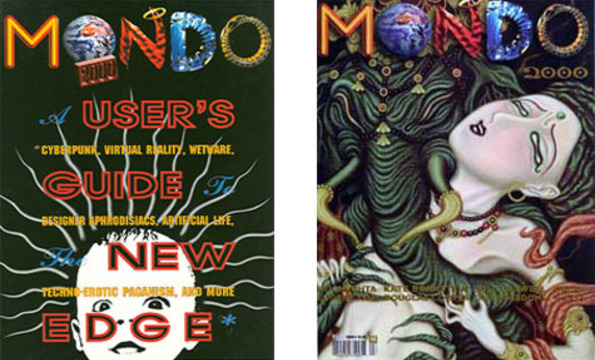
The thing that was interesting was back then that we found was that it was super easy to fool a human brain into thinking that something is real. You can very easily suspend disbelief. It’s automatic. Even after you are telling yourself “I am in an office chair, in an office building…”
What was the community like within these groups of VR people back then?
VPL really was a great group of introverted geeks, and we all played really well together. It was really fun to work and play there. We tried ideas out, and we created tools when they weren’t available. We bought tools if we could afford them (if they were available). So it was really sort of hackerspace-ish.
Did you ever meet Timothy Leary? (He was interested in VR back then)
Yeah. Yeah, he was at VPL. He was one of the people we were working with. He was one of the people in and out of VPL.
It was really cool to talk with him. He had the most wonderful sense of humor about everything. He was into consciousness and helping everyone live better lives. He was doing what he could to help others do that. He took that very seriously but also didn’t take it so seriously that he couldn’t have a sense of humor around it all. I was glad I got to meet him.
Consciousness is an outgrowth of our brain. It makes patterns of things and calls it real. Once it’s a pattern, it’s real.
Have you tried the new Oculus Rift stuff?
Yeah. Way way cool. I met some of the people involved who created that; in Brighton, UK. That was a couple years ago.
How does the hardware of the Oculus Rift and similar headsets out now compare to what was being developed back in the 80’s and even the 90’s?
It’s way better. Our resolution was super low. We used Sony TV screens. We took apart Sony portable TVs and those were 480 x 680. Resolutions of these things are way better. And if you have two of them, one for each eye, wow it’s even better.
The lag between when you do something and when the computer catches up is incredibly small now – unlike our virtual reality systems back then.
We took apart Sony portable TVs and those were 480 x 680. Resolutions of these things are way better. And if you have two of them, one for each eye, wow it’s even better.
The price is orders of magnitude better, and the resolution is also orders of magnitude better. The sound has gotten way better. It’s all cool and so much of it is open. Anyone can pick up on it. People have really good documentation online about it all; so there is no reason why anyone who’s interested can’t play with this.
What experiences have you tried on the Rift and Cardboard and stuff like that?
I’ve seen some pretty interesting realities. I love urban exploration, and there’s this one which I saw while I was in Brighton that is sort of a post apocalyptic urban exploration experience world where there are all these skyscrapers that you can fly into. So you fly around into these buildings, and you can explore the stuff that’s left behind. I just thought that was really cool. It was very very well done graphically. Very imaginative.
What kind of advice would you give to developers who are picking up virtual reality for the first time?
Well, I can’t really come up with any specifics of what to do and what not to do. I don’t really want to tell anyone what to do and what not to do. I love sharing my perspectives. If people resonate, cool, go with it. If not, then at least think about this stuff.
I think the main way of having the most positive impact on anything you do in the world is to explore and do what you totally love doing. And if you don’t know what you love, do less of what you know you don’t love.
No matter how cool your life is, you can always keep exploring. Make choices so that you can make it cooler. Keep doing that, and find things that you love. If it leads to projects, then do that. Keep making it cooler. Keep doing more of what you love; and then you will have a positive impact.
I think the main way of having the most positive impact on anything you do in the world is to explore and do what you totally love doing. And if you don’t know what you love, do less of what you know you don’t love.
That’s all I can say. If more people do that, that could have a powerful effect. It’s already having a powerful effect.
——————-
The Full Interview (in all of its glorious context):
https://www.youtube.com/watch?v=5TrRO_j_efg#t=2148
A Side Note from Mitch Altman:
You know, one thing I just want to kind of say on the minus side of all of this stuff, because everything in the world has pluses and minuses. Technology being powerful, the pluses and minuses are more powerful; and given our cultural context of the military and the economy, the minuses are very negative.
Back in the day, in the 80s, Jaron was in the mindset that technology is going to save the world! And including virtual reality which is going to make everything better. He was kind of drinking his own Kool-Aid.
[Jaron] was always saying how it would save the world, and my point of view was that this stuff is powerful. Just like TV. Even though anyone can create their own world, who has the time, the money, the energy, the wherewithal to create compelling content for these worlds? Well, it’s going to be the corporations and governments; and they are doing it not for our benefit. Just like TV isn’t doing what they do for our benefit. They are doing it for their own purposes. That’s indeed what TV does; and that’s what indeed is happening with virtual reality.
So again, we got to think about this stuff too when we are putting this into the world. It makes it even more important if you are into this stuff to do something really cool and positive with it; and be aware that as you do the cool and positive things, there are people who are going to make note of it and use it for these other purposes as well.
And it’s just interesting that years and years later, decades later, Jaron writes this book “You Are Not a Gadget” which picked up on the things we were talking about – showing the downsides of technology and it becomes us being enslaved to them as so many dystopian science fiction books have predicted. But that’s not the totality of what [VR & technology in general] can do. Here we are talking. We never even met each other and having this conversation because of this technology that has a low barrier to entry.
So let’s make use of this stuff to make our lives and the world around us cooler.
UploadVR’s “Flashback” series is an ongoing effort. We are looking for virtual reality pioneers who worked with VR in the 1990s and before. If you are one of those people or know someone who is, email Matthew Terndrup at terndrupm@gmail.com to arrange for an interview.
Read more Flashbacks:
- Flashback: Virtual is Reality Again – Interface vs Interference Design
- Flashback: Tony Parisi on Co-Creating the Virtual Reality Markup Language (VRML) in the 1990s

